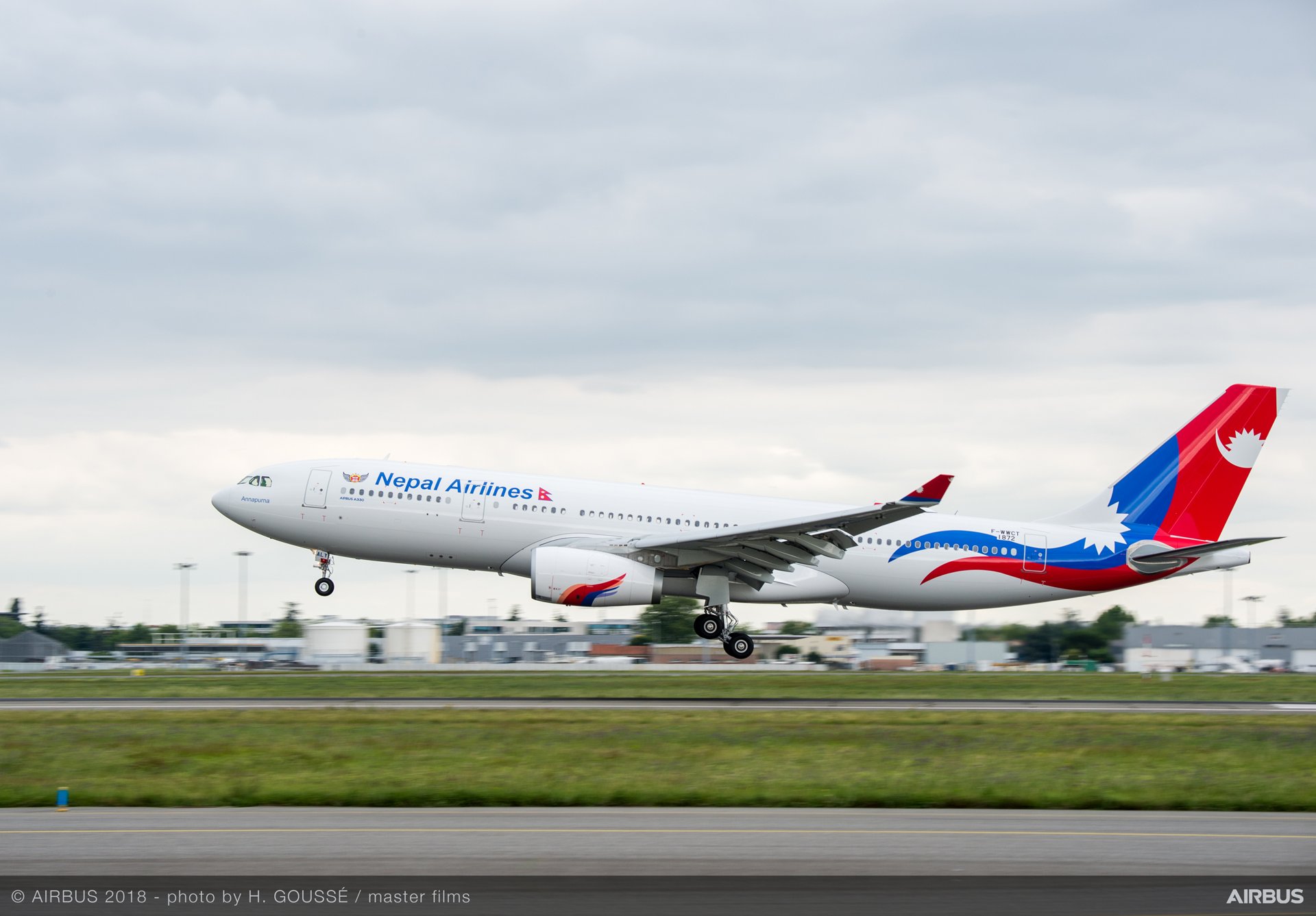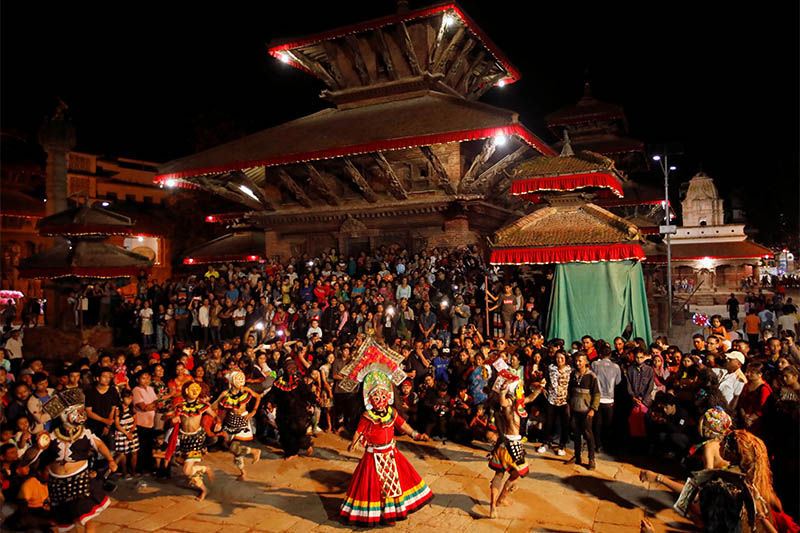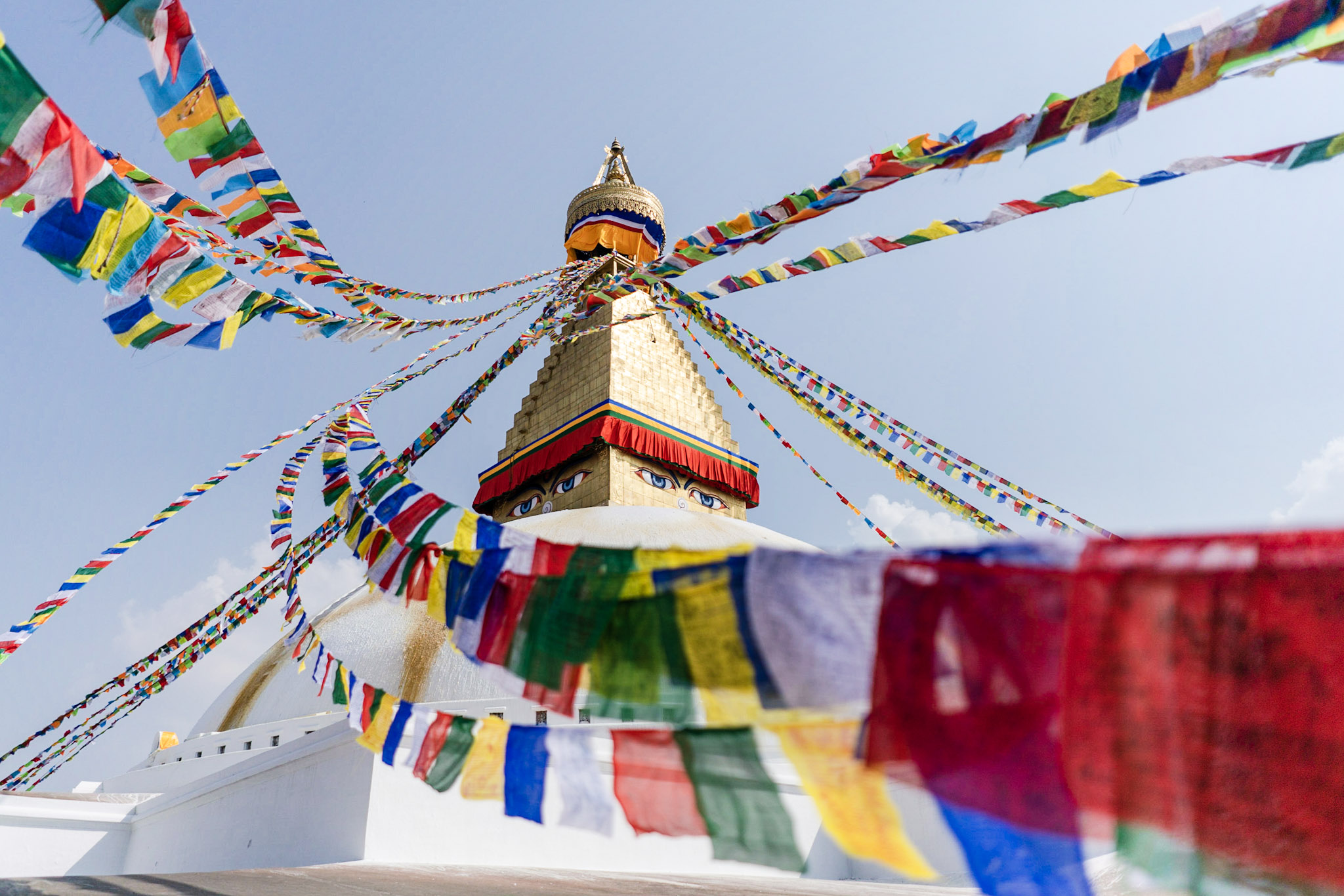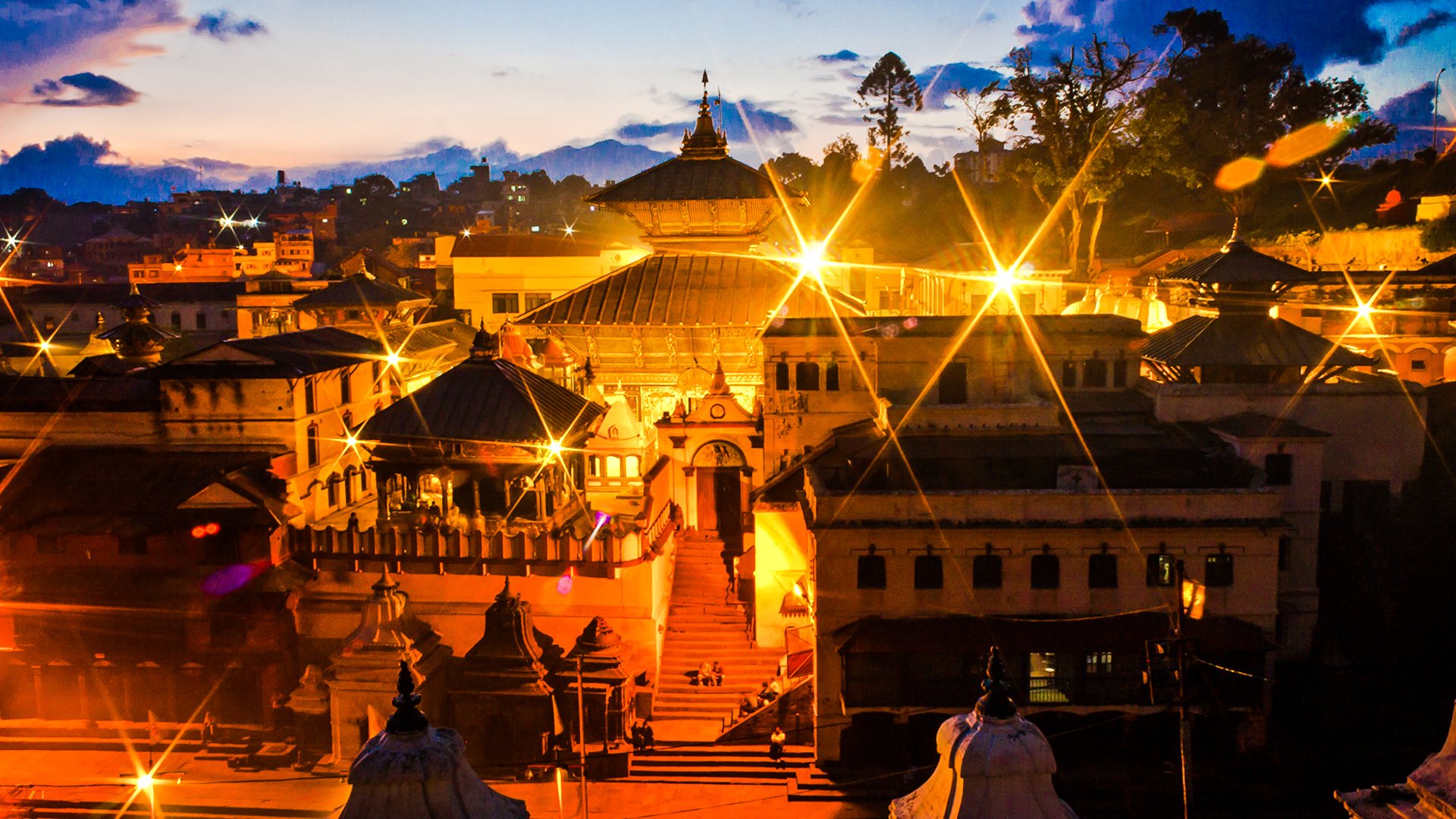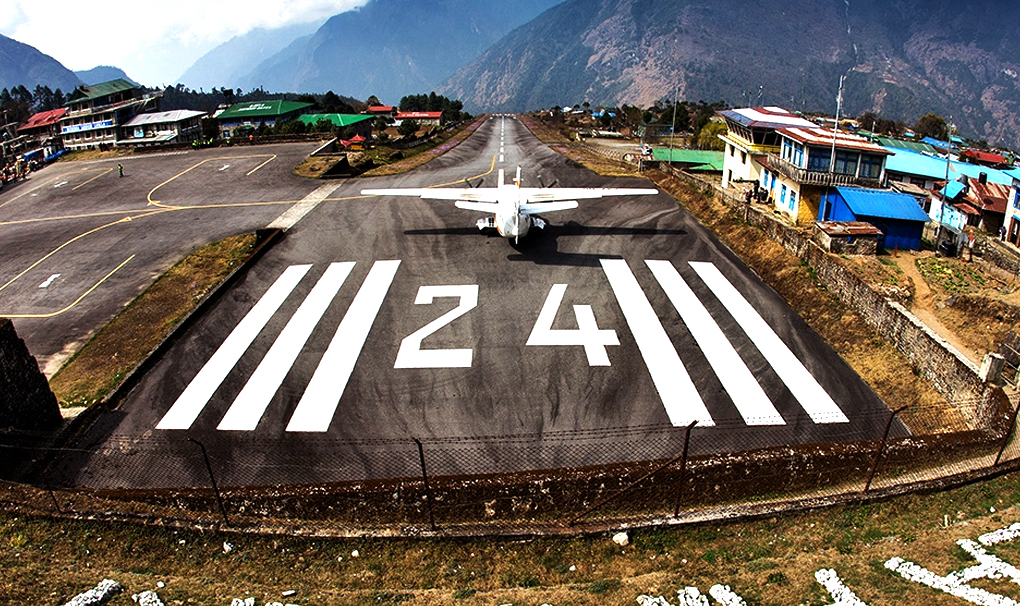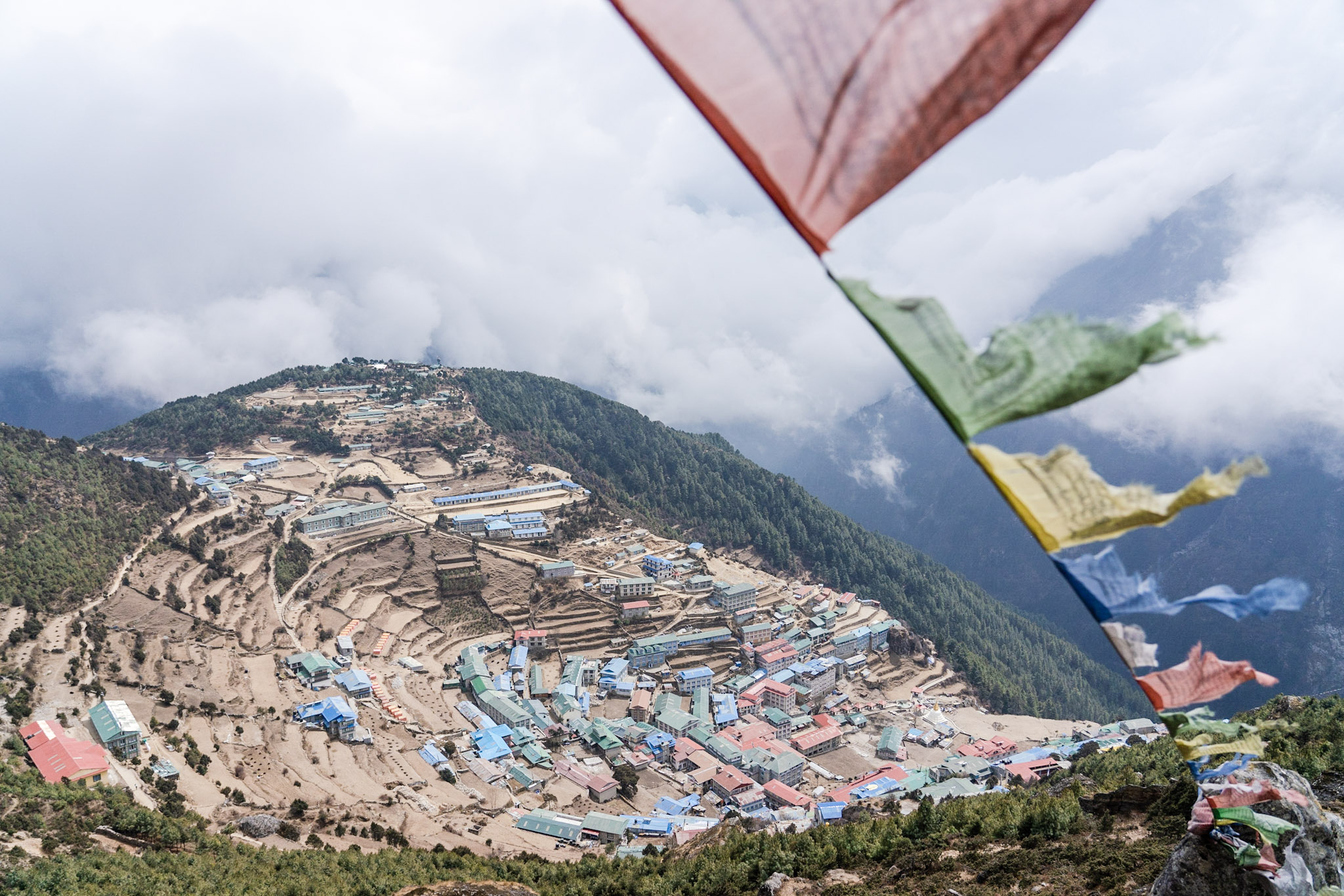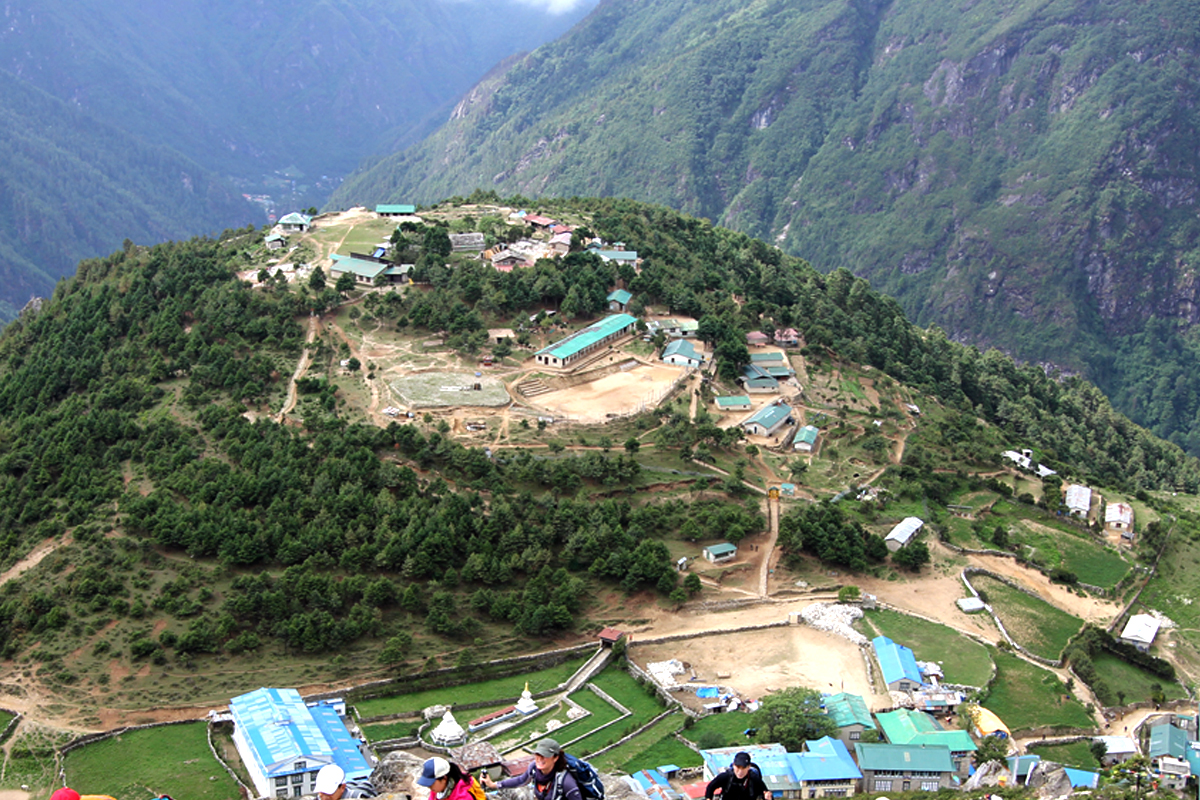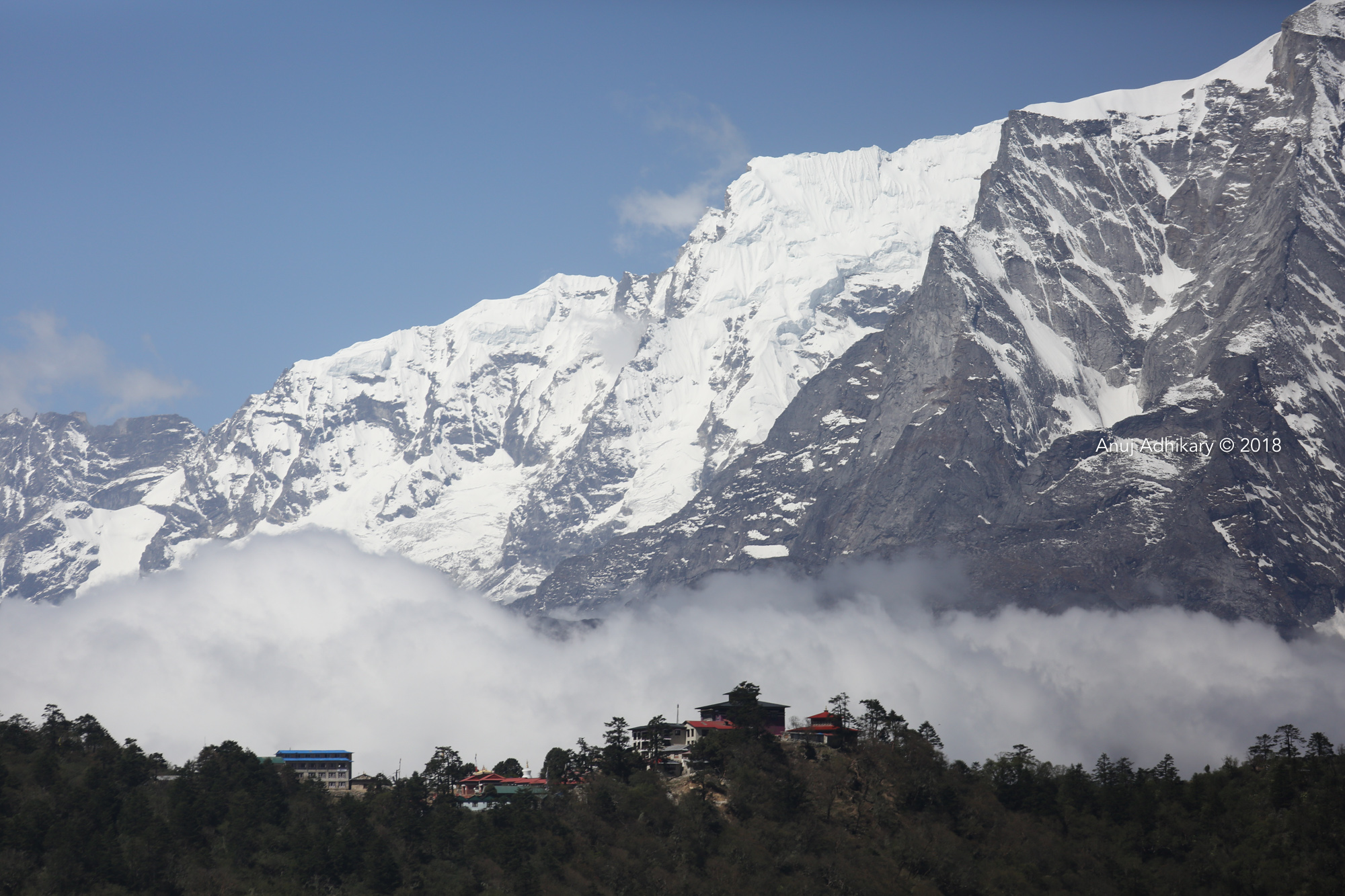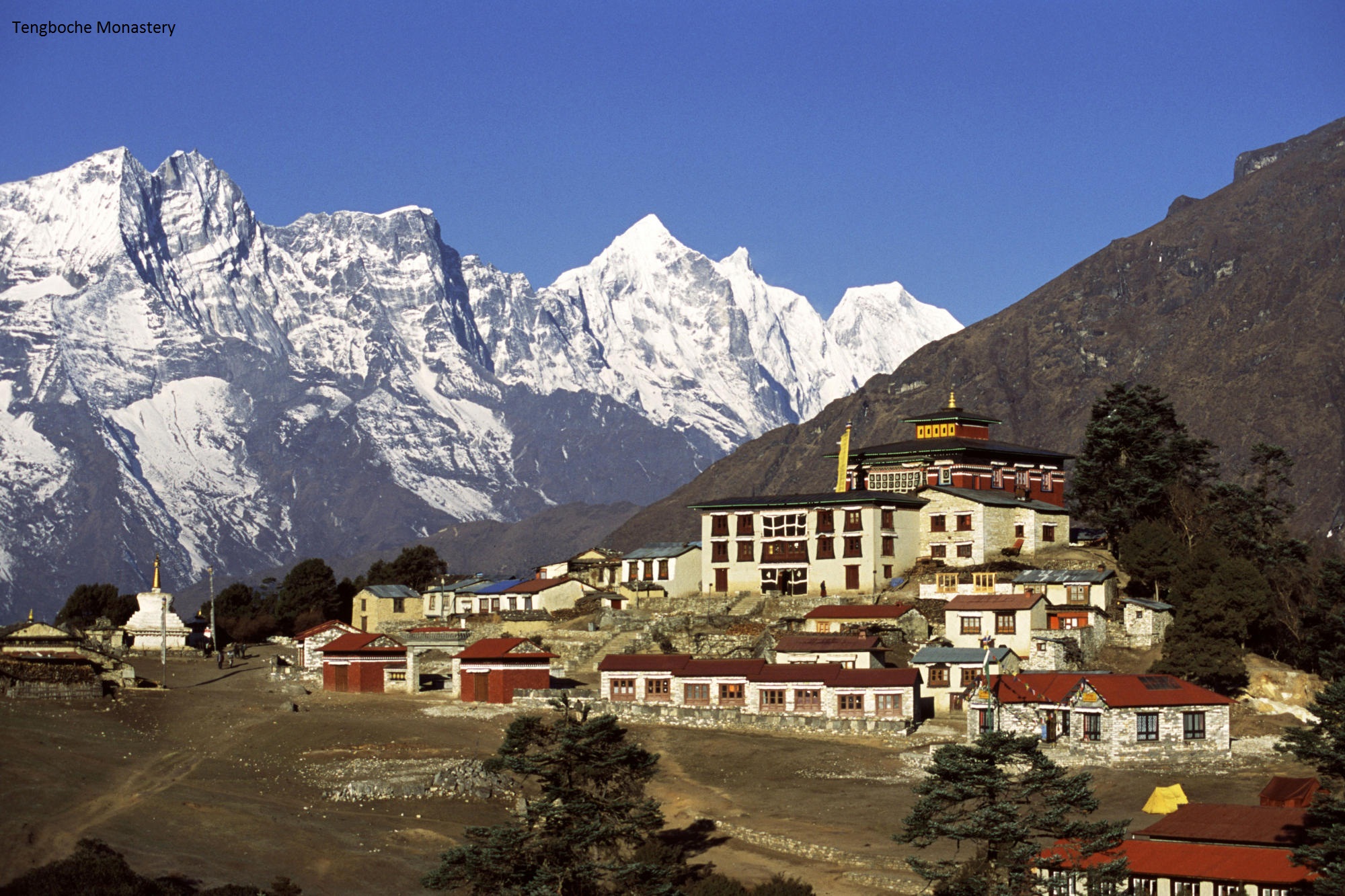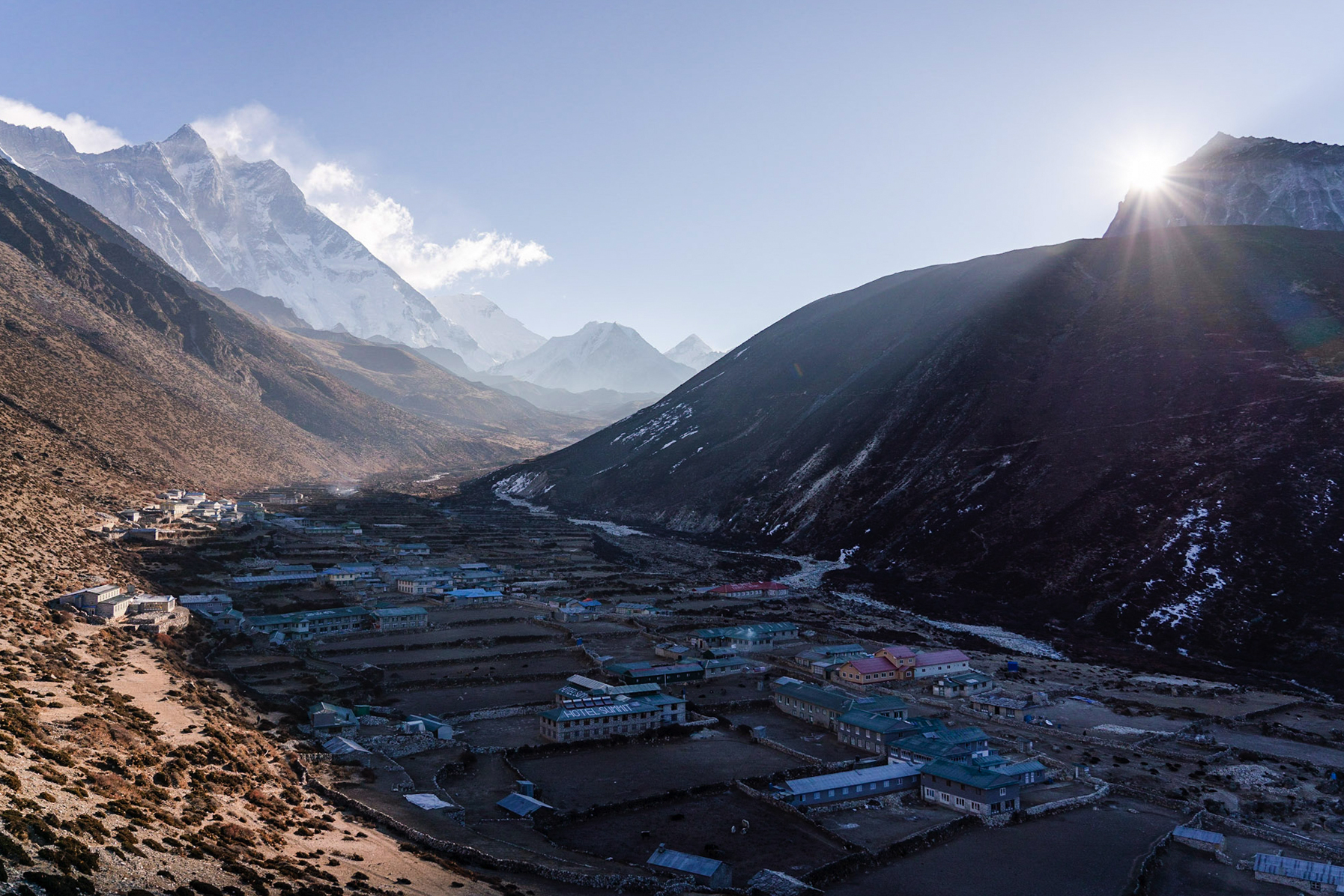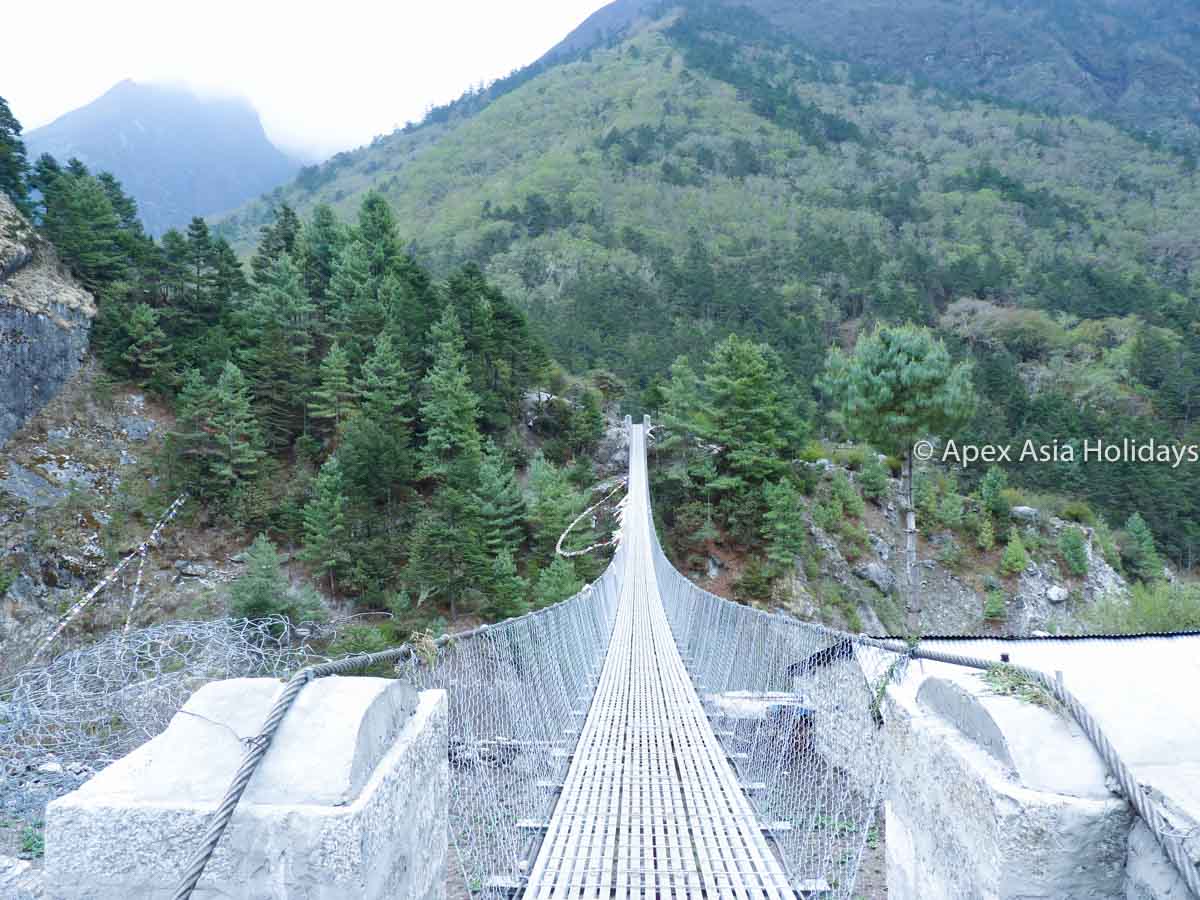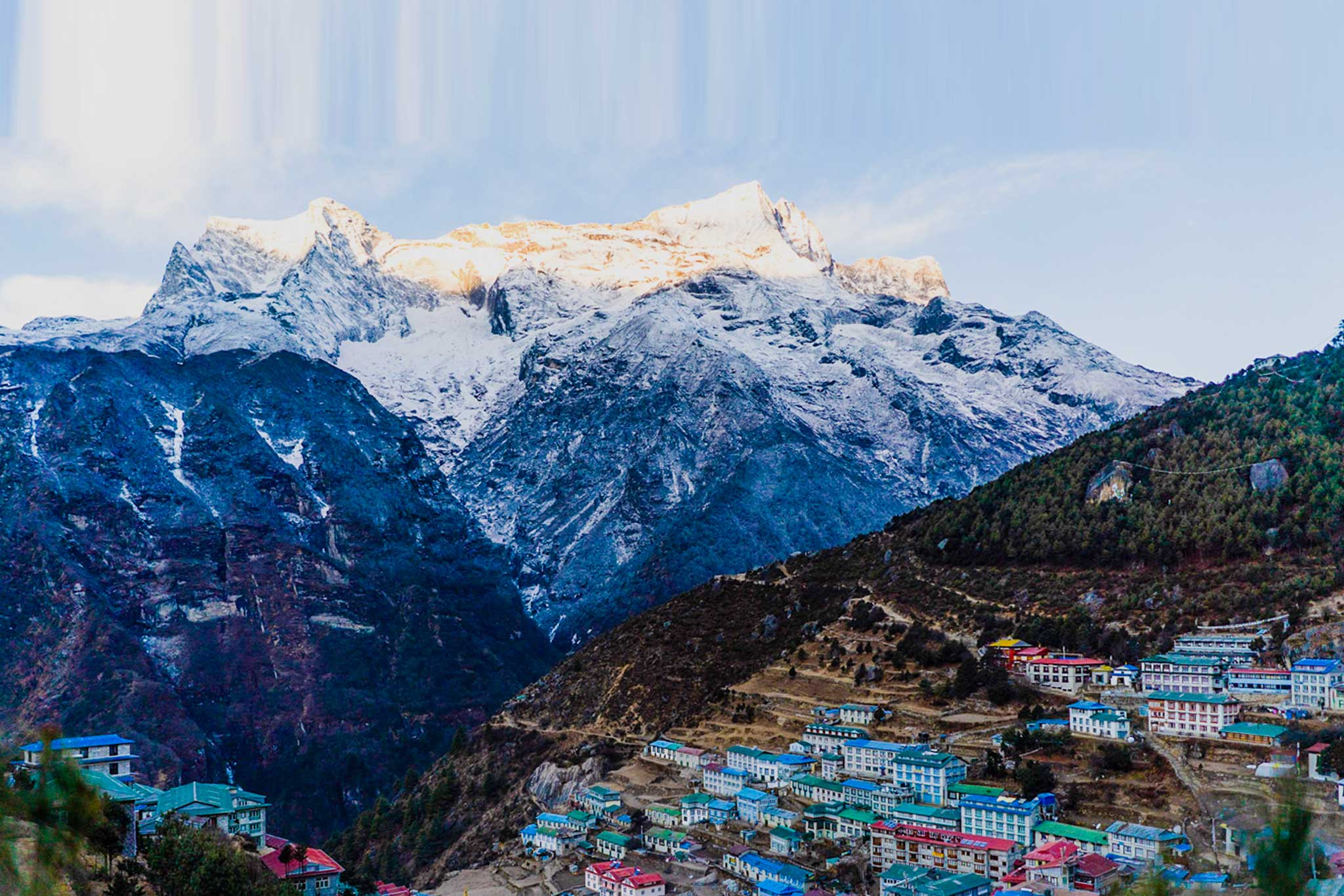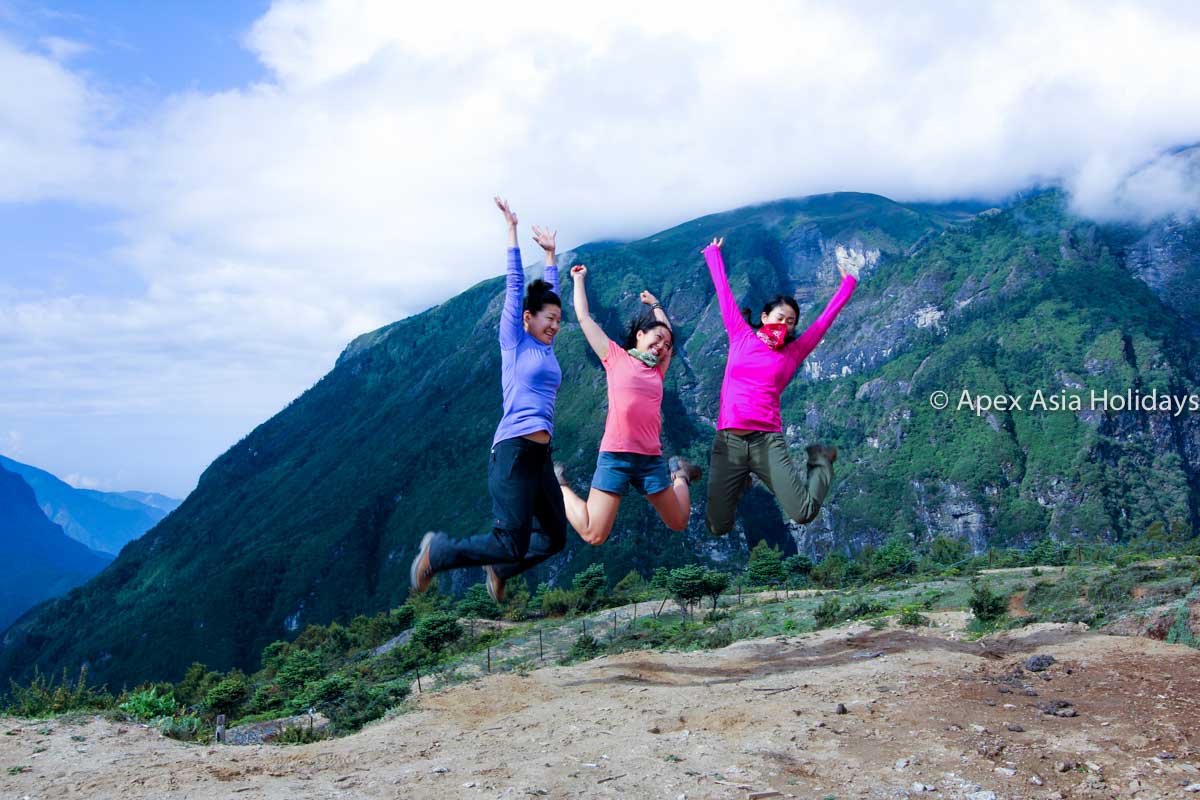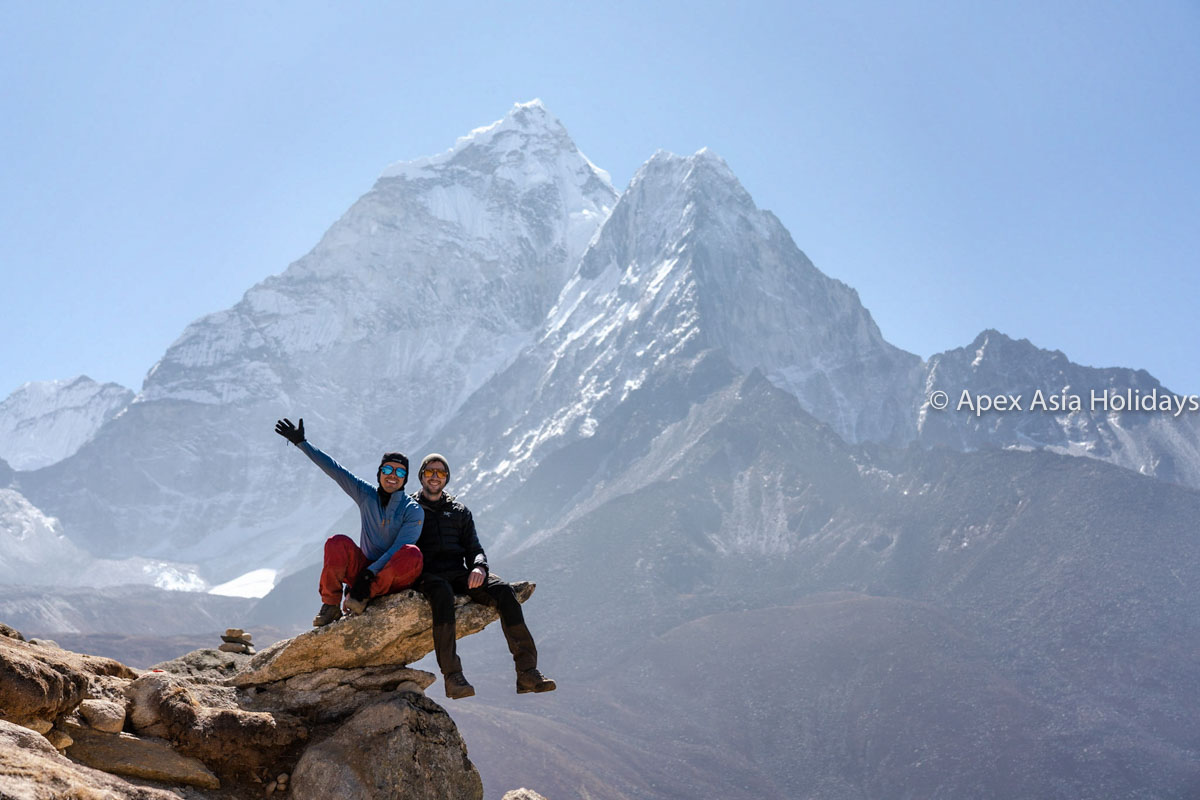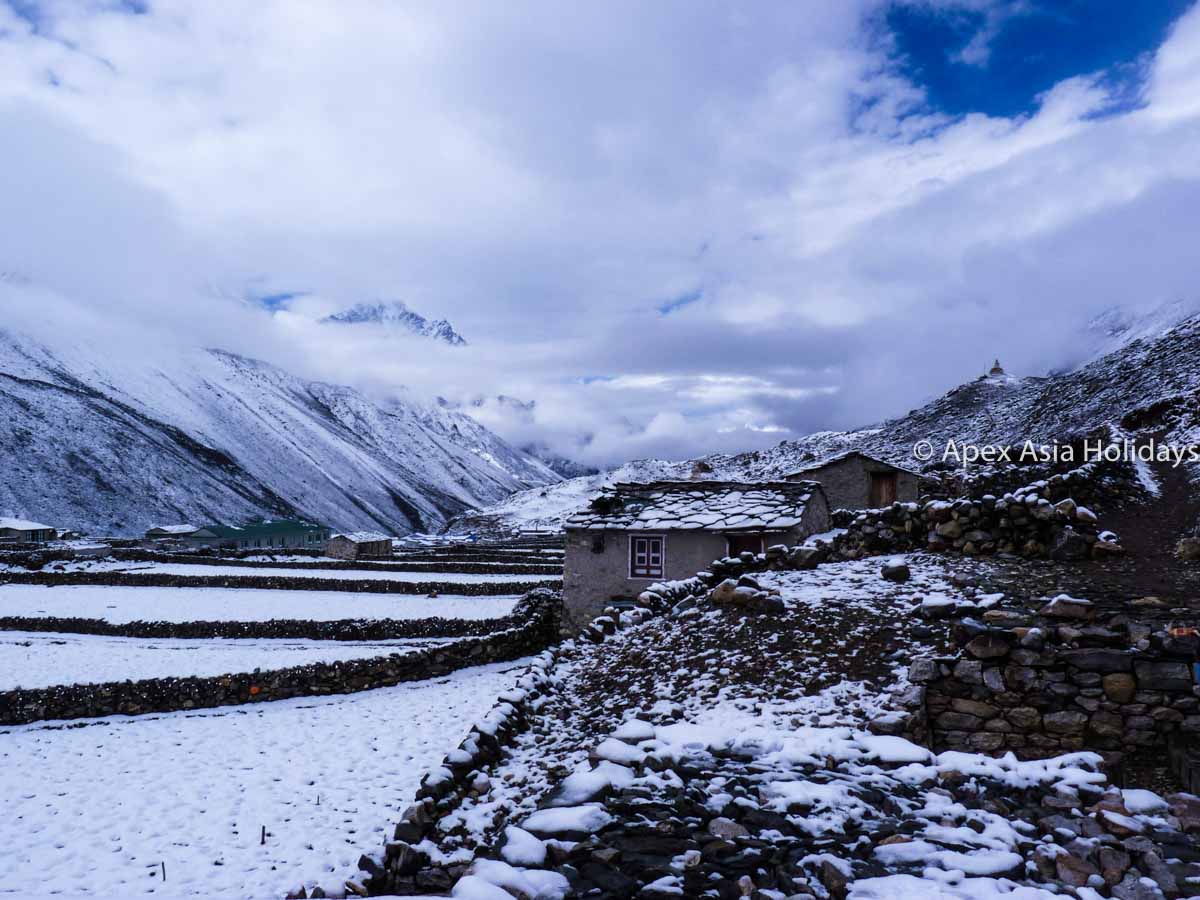Trip Overview
Island Peak Adventure: A Journey to the Heart of the Everest Region
Discover the allure of Island Peak, locally known as Imja Tse, a prominent and accessible climbing peak in the renowned Everest Region. Situated in the picturesque Khumbu Himalayan Range, this peak offers an enticing challenge for those looking to venture into the world of mountaineering.
A Mountain with a Rich History
Originally named Island Peak in 1953 by members of the British Mount Everest expedition, this mountain captivated many with its unique appearance, resembling an island amidst a sea of ice when viewed from Dingboche. Although officially renamed Imja Tse in 1983, the original name continues to resonate with climbers worldwide.
Your Expedition Begins
Your journey to Island Peak starts with a scenic flight from Kathmandu to Lukla, a gateway to the Everest Region. Upon arrival, a brief tea break allows you to meet your trekking staff and prepare for the trek to Phakding. The following day’s trek to Namche Bazaar, known as the gateway to Everest, sets the stage for your adventure. An essential acclimatization day in Namche includes a hike to the nearby Syangboche Airport and Khumjung Village, offering a glimpse into local Sherpa culture and stunning mountain views.
The Trek to Chhukung
After three days of trekking from Namche, you’ll reach Chhukung, journeying through Tengboche, Pangboche, and Dingboche. This trail offers breathtaking views of iconic peaks like Mt. Everest, Thamserku, Kangteka, Amadablam, and Lhotse. Along the way, keep an eye out for rare wildlife such as the Himalayan Thar, Snow Leopard, and Red Panda. In Chhukung, your climbing guide will provide essential training on climbing techniques and equipment use, preparing you for the ascent.
The Climbing Experience
Ascending Island Peak is an exhilarating experience, culminating in a summit that rewards climbers with spectacular views of both lower and higher peaks in the Everest Region. This climb is not just a physical challenge but a journey through some of the most stunning landscapes on Earth.
Descending Through Tengboche
Following your successful climb, you’ll descend to Tengboche, home to the largest Buddhist Monastery in the Everest Region and the birthplace of Tenzing Sherpa, one of the first climbers to summit Mt. Everest. This culturally rich village offers a tranquil environment to reflect on your accomplishment.
The Journey Back from Island Peak
Your adventure concludes with a return trek to Namche Bazaar and then a flight from the Tenzing-Hillary Airport back to Kathmandu. This journey not only challenges you physically but also immerses you in the rich cultural tapestry and breathtaking natural beauty of the Everest Region.
Join Us on This Unforgettable Expedition
Island Peak is more than just a climb; it’s an adventure that offers a unique blend of cultural exploration and mountaineering excitement. Whether you’re an aspiring mountaineer or a seasoned trekker looking for a new challenge, the Island Peak expedition promises an unforgettable experience. Book your journey with us and step into the heart of the Himalayas, where adventure awaits at every turn!
Tour Highlight
- Expereice of landing and taking off in Lukla airport
- Kathmandu City Tour
- Experience life as the “mountain people”
- Tengboche Monastery
- Icy Lake Imja Lake
Trip Facts
Trip Itinerary Expand All
Arrival at Tribhuwan International Airport
Pre-trip meeting and sightseeing around Kathmandu valley
The day beings with a meeting and introducing with your trek and tour leader. After breakfast, we organize a short meeting at the hotel lobby. The meeting finalizes the preparation of the trek. In the meeting, you need to bring three copies of passport copy size photos, and travel insurance copy. Soon, the day tour will starts and on the tour visit most highlighted places of Kathmandu.
PASHUPATINATH TEMPLE
Pashupatinath Temple is one of the most visited and sacred places of Hindu. According to Hindu mythology, Pashupatinath is one of four Dham. It is not only a religious place also the cremation place. The dead body is burning with firewood in the bank of holy river Bagmati.
Bouddhanath Stupa is one of the biggest Buddhist shrines in the world. While touring in Buddha you can meet the monks, learn Buddhism, gather the information about Thankas, and its significants.
Bhaktapur Durbar Square is a royal palace built in centuries ago when Nepal had 22 and 24 state kingdom. The palace is famous with the name of fifty-five windows durbar, Nyatapol Mandir the tallest temple in Nepal. The Lion Gate, Golden Gates, The statue of King BhupatindraMalla and the pottery where the potter makes are the main attractions of Bhaktapur.After finished the tour, the evening time is to review the luggage for the trek. If you interested you can walk around Thamel, choose the restaurant for dinner.
Fly to Lukla (2840m) & trek to Phakding (2610m)
Trek to Namche Bazaar (3441m)
Following Dudh Koshi River and then a climb to reach Namche takes approximately 6 hours. We cross the river several times, encountering yaks and mules along the trail. Finally, the trail on the banks finish and we start ascending on steep gradient up, crossing the highest suspension bridge of Everest Region. We stop at Top Danda about midway up the climb and see the first sights of Everest, weather permitting. The climb is steep, so we walk with a comfortable pace. Finally we reach Namche, the biggest town in the region.
Namche Bazaar acclimatization day
Today is a rest day of the trek. It is very important to take rest and acclimatize as we gain altitude. Today you will hike up to Syangboche and visit a museum that belongs to Sherpa culture, and the history records of Mt. Everest expedition by Tenzing Norgay and Sir Edmund Hillary, the first ones to scale Everest. The view of Namche, Khumjung village, and the massive summits in front are stupendous from Syangboche.
Trek to Tengboche Monastery
After breakfast at the hotel, we heard north towards Tengboche, a superb hill for photography and Himalayan view. The monastery at Tengboche is one of the major highlights of Everest Base Camp standard trek. To reach Tengboche we need to walk for about 6 hours today, which includes a steep uphill bit on the second half of the day. In the evening, we walk around the Tengboche monastery and visit the monastery. Enjoy the beautiful evening with spectacular views at Tengboche Hill.
Trek to Dingboche (4350m)
After breakfast we trek down to Debuche and continue on to Pangboche, which is a major Sherpa settlement. Walking through the village, we get to see Mt. Ama Dablam towering us from the right, making a picture perfect setting for the village to be in. In fact, the mountain will be at a stone’s throw away from us as we walk. On undulating trails we cross a river and make a short climb up to Dingboche valley.
Trek to Chhukung (4710m)
From Dingboche to Chhukung is about two and half an hours walking in slightly uphill at the altitude of 4710m. It’s quite important to adjust to high altitude in order to climb up Island Peak. When you reach Chhukung, the trek guide will introduce you with the climbing guide.
Trek to Island Peak base camp (5240m)
Today you will trek to Island Peak Base camp. From today accommodation will be in tented camps for the next two days. Foods will be prepared by professional camping cook. After lunch your climbing guide will give you some lectures about using the climbing equipment and technical parts of climbing for next day.
Acclimatization day.
This is a day for adjusting with thin air by doing a short trek to the high camp and explore the Imja lake. Which helps to climb the peak for tomorrow morning. You will get short technical climbing training by your climbing guide. Such as how to use climbing gears, etc.
Island Peak summit & return to Chhukung.
Finally, we reach the main climb day, also the highlight of this trip: climbing Island peak. Firstly, the guide will check the weather conditions and per-meeting to start. After leaving the base camp, today is your main adventure day. (weather permitting) you will start early in the morning for the climb up Island Peak (6189m). After High camp, trail ascend through a gorge to the right, after a safe trip to the top, you make your way back down to base camp and same day back to Chhukung.
Trek to down to Tengboche
We descend down towards Tengboche via Dingboche, Pangboche and Debuche, which takes about six hours. After breakfast, you will descend towards Dingboche valley, cross the Khumbu Khola and reach Pangboche via Orsho and Somare. You will have your lunch at Pangboche and head off to Tengboche through rhododendron forests.
Trek to Namche Bazaar (3441m)
After breakfast again watch 360 degrees Himalaya view from Tengboche and trek down to Phungi Thanga and cross a stream. After about 1.5hrs of the steep climb up to Kayanjuma, have a short break. Again continue almost flat to reach Namche where you can enjoy and celebrate success of the trip.
Trek Down to Lukla (2840)
Morning flight back to Kathmandu - Farewell Dinner
This morning you will flight out from Lukla to Kathmandu, and upon arrival your guide transfers you to the hotel. A good rest after a long trek will be crucial. In the evening, you have leisure time to stroll around Thamel and do any souvenir shopping if you like. In the evening join the Farewell Dinner in a Nepali Restaurant.
Transfer to the airport for your final flight departure
The trip concludes today. Your guide will drop you off at the international airport for your departure back home.
Itinerary Informations
Lukla flight from Manthli Airport, Ramechhap
Due to the air traffic in Kathmandu during the peak months (March, April, May, September, October, and November), CAAN has promulgated the notice that the flight has been shifted to Manthali from Kathmandu to Lukla. If there are changes will update you ASAP.
Lukla Flights:
All we know is that the Lukla flight is sensitive in the case of weather. Instantly it may be delayed and canceled as well. A tiny Himalayan airport has difficulty facing heavy traffic which is why sometimes the flight may be delayed. So, we suggest, if you are trekking in Everest, please make sure at least you have two days additional in the program.
In the case of a weather cancellation, the best alternative to get Lukla is to charter a helicopter because the copter can fly in a lower visibility of 1,500 meters. However, Twin Otter and Dornier aircraft need minimum visibility of 5,000 meters.
What about the Helicopter cost? Is it getting instant or need to be in the queue?
A helicopter charges US $ 2500 per flight to Lukla from Kathmandu. And the US $ 500 per person on a sharing basis. Except for the emergency, during the high season and extreme weather of Lukla, you may not get a helicopter instantly or need to be in the queue. Also, if you have requested the Helicopter for less than 24 hours, you may need to wait because of the limited number of helicopters, and they’re using various activities in the mountains.
What Includes & Excludes
Includes
Accommodation
- Three Nights in Hotel Kathmandu in BB Plan
- One or two nights of tented camp during climbing
Flight
- Kathmandu-Lukla-Kathmandu domestic airfare
Guides and Porters
- An English speaking local guide
- An English speaking local climbing guide
Meals
- Three meals (Breakfast, Lunch, and Dinner) during the trek.
- Breakfast is In Kathmandu Hotel
Transports
- All ground transportation as per itinerary
- Kathmandu Ramechhap round trip is in sharing vehicle
Additional Services
- All government taxes and official expenses.
- Farewell dinner one night before the client’s final departure in a typical Nepali Restaurant with culture dance. Your guide will accompany you.
- Trekking/tour permits, entrance fees.
- Accommodation, foods, insurance, salary, equipment, and medicine for field staffs.
Excludes
- All drinks including bottled/boiled water along the trekking route
- Anything not mentioned in the price includes.
- International airfare to and from Nepal.
- Lunch and dinner in the city.
- Personal trekking gears/equipment.
- Tips for trekking staff (Tipping is expected).
Join the Departure
Join the departures 
Guest Reviews
We highly recommend Broad Adventures they provided exceptional guidance on our Everest Base Camp trek. Our guide’s Gynau’s professionalism,...
Read More...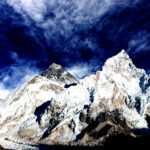
David Neufeld
CanadaIf you are looking for a tour to see the Mt Everest base camp look no further. I have...
Read More...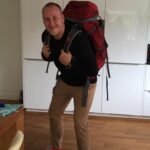
Tim Troost
AustraliaI was looking at an exotic trek adventure. After looking for a bunch of places to go I thought...
Read More...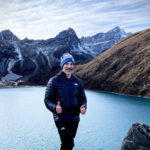
Keith B.
USAKeshab was our most gracious and amiable guide in Kathmandu and to Everest basecamp. My wife accompanied me on...
Read More...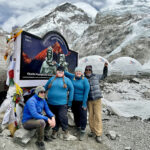
Ken Byers , Nevada
USAMy son and I went for trekking in Nepal in 2009, and we were lucky to have Keshab Khanal...
Read More...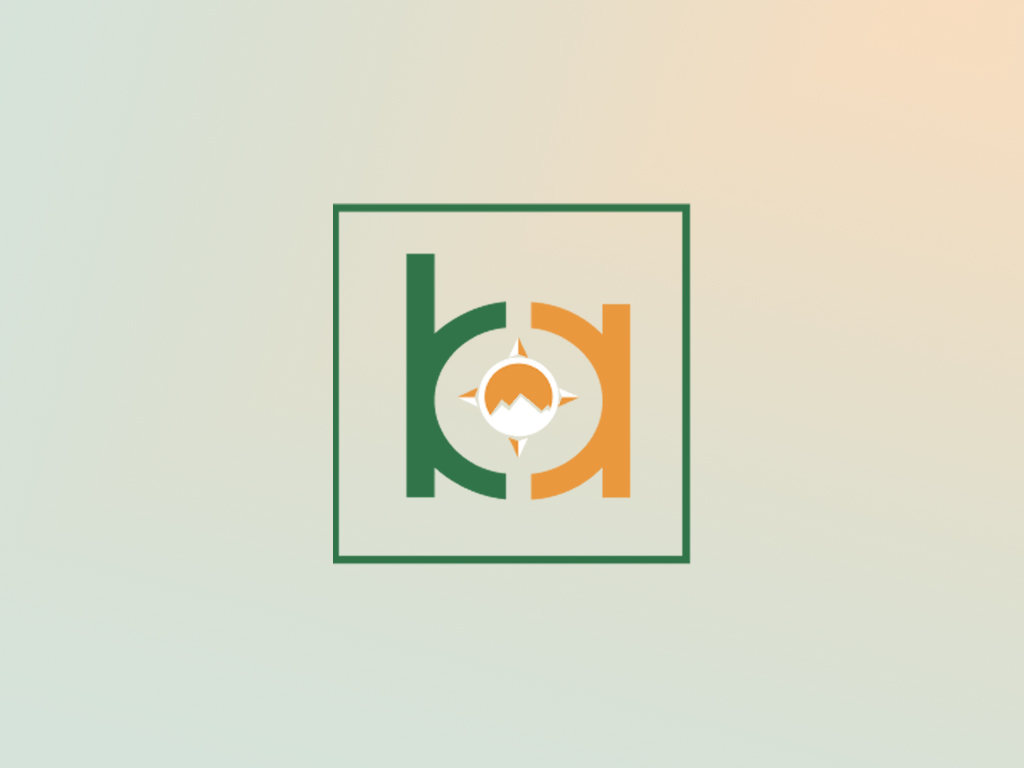
Dr. Raphael Hemmendinger
Jerusalem , IsraelIn 2005 I came to Nepal for the second time, this time whith a very specific queste. I wanted...
Read More...
Richard Rijken
Amsterdam , NetherlandsI was always willing to go to the Himalayas and explore some of the beauties hidden in the sacred...
Read More...
John Peter
Manchester , United KingdomNamaste! This was my first time to Nepal, and I had an amazing time on my trek. From the...
Read More...
David Patrician
Hamburg , GermanyI was on trekking from 24.10.10 to 5.11.10 in the half part of Annapurna circuit from Bhulbhule to Jomsom....
Read More...
Vaya Bairaba
Athens , GreeceEquipment List
Outfit
- Shoes/Boots
- A pair light trekking shoes or sneakers to wear in and about camps or lodge.
- A pair light to medium weight waterproof hiking/trekking boots. Make sure the size and should have to be avoidable for blister.
- At least four pairs of liner socks, synthetic. And three pair heavyweight socks to be worn over liner socks.
- Two pair of trekking pants, preferably that zip on/off at the knees.
- Two pairs of lightweight long underwear.
- Two pairs of nylon hiking shorts.
- A soft shell jacket, water resistant, with insulation, underarm ventilation zippers. The full front zipper is preferable for ventilation.
- Two long sleeve polyesters, light colored shirts for sunny days.
Warmth
- Neck Warmer
- Light weight Down Jacket and Sleeping Bag
- A pair of lightweight socks, a good option for the lower / warmer parts of the trail and also on lodges at the time of dinner.
- A pair liner woolen gloves for mild days and heavy for morning and evening
- Warm wool or synthetic hat
Climbing Gears
- A neck gaiter
- A pair of expeditions style gaiters- ensure fit over your boots
- Non- locking carabiner
- D –Shaped locking
- An ascender
- A mountaineering ice axe with a leash
- Climbing Helmet and Harness
- A pair of steel crampons
Documents and Money
- Durable wallet/pouch for travel documents, money & passport
- Airline tickets
- Passport and extra passport photos (2 copies)
Electronics
- Additional Batteries Powerbank , Solar Charger
- Additional batteries for Head Lamp
- Head Lamp
Medicine and First Aid
- Sunscreen (SPF 40)
- Lip balm (At least SPF 20)
- Band-aids
- Anti-infection ointments
- Immodium or Pepto bismol capsules for upset stomach or diarrhea
- Extra Strength Excedrin for altitude related headaches
- Ibuprofen for general aches and pains
Get Trip PDF file
Why travel with
Broad Adventures
Since 2010, we have curated unique itineraries that offer once-in-a-lifetime experiences, ensuring every trip is filled with joy and adventure. Our focus on the fun factor and the right amount of challenge allows you to achieve a profound sense of personal accomplishment, all while enjoying the camaraderie of like-minded travelers.
Small-Group Adventures
Join an intimate group of like-minded travelers who share your passion for discovering the world's wonders safely and confidently. Our small group settings foster a deeper connection with your fellow explorers and the incredible destinations we visit.
Expert Local Guides
We exclusively employ local guides and porters for their unparalleled knowledge and expertise. Their insights and firsthand experiences enrich your journey, giving you a deeper understanding and appreciation of the local culture, history, and environment.
Responsible for Tourism
Your safety is our utmost priority. Our dedicated team of trained professionals ensures the highest standards of care, including providing fresh and hygienic meals, comprehensive First Aid supplies, and round-the-clock communication services. We are committed to responsible tourism practices, emphasizing the importance of sustainable and ethical travel.
Health and Saftey
Promoting responsible tourism is essential, as it calls for a collective effort from everyone involved in the industry. By prioritizing health and safety, we ensure that each journey is not only enjoyable but also respectful of the destinations and communities we visit.
How can we help you?
- City Tour Equipment
- City Tour Season
- Climbing Equipment
- Climbing Season
- General Questions
- Guide and Staffs
- Nepal Overview
- Tipping
- Transportations
- Trekking Equipment
- Trekking Season
- VISA info
- Weather and Temperature
Do you provide any equipment for the trek?
Broad Adventure provides you a basic equipment like a Sleeping Bag and a down Jacket, for the tea-house trek. And for the climbing trip, we provide the basic equipment. For a camping trek check it once including the section.
What is the time zone of Nepal?
NPT (UTC+05:45)
What cultural attractions can I explore in Kathmandu?
Kathmandu is home to historical sites like Durbar Square, Swayambhunath (Monkey Temple), and Pashupatinath Temple. These landmarks showcase Nepal’s rich cultural and religious heritage, providing visitors with a deep insight into the country’s history.
What are the must-visit cities in Nepal?
Kathmandu, Pokhara, Bhaktapur, and Patan are popular cities offering rich cultural experiences. Each city has its own unique charm, historical sites, and vibrant local markets.
Do you provide any equipment for the trek?
Broad Adventure provides you a basic equipment like a Sleeping Bag and a down Jacket, for the tea-house trek. And for the climbing trip, we provide the basic equipment. For a camping trek check it once including the section.
Do I need to tip the guide and porters? What is the standard tip?
Tips is expected by your team members and normally the standard is 10% of your total trip cost.
What is the climbing season in Nepal?
The main climbing seasons are spring (April to May) and autumn (September to November). During these times, the weather is more stable, providing safer and more favorable conditions for climbing expeditions.
Are there other mountains in Nepal suitable for climbing?
Yes, Nepal is home to numerous trekking peaks and mountains suitable for climbing, such as Island Peak, Mera Peak, and Lobuche East. These peaks offer a challenging yet rewarding experience for climbers of various skill levels.
Can I climb Mount Everest as a tourist?
Climbing Mount Everest requires significant preparation, experience, and permits. Most climbers join organized expeditions with experienced guides. Climbing Everest is a serious undertaking that demands physical fitness, technical skills, and a high level of commitment.
Do I need to tip the guide and porters? What is the standard tip?
Tips is expected by your team members and normally the standard is 10% of your total trip cost.
What is the voltage and plug type used in Nepal?
The standard voltage is 230V, and the plug type is the Europlug (Type C) and the British-style plug (Type D). It’s advisable to bring adapters if necessary.
What is the voltage and plug type used in Nepal?
The standard voltage is 230V, and the plug type is the Europlug (Type C) and the British-style plug (Type D). It’s advisable to bring adapters if necessary.
Is it necessary to get travel insurance for Nepal?
Yes, travel insurance is highly recommended, especially for trekking and adventure activities. Ensure that your insurance covers medical emergencies, evacuation, and trip cancellations.
What languages are spoken in Nepal?
The official language is Nepali, but English is widely understood in tourist areas. Additionally, various ethnic groups have their own languages.
What is the currency used in Nepal, and are credit cards widely accepted?
The official currency is the Nepalese Rupee (NPR). While major cities and tourist areas accept credit cards, it’s advisable to carry cash in remote areas. ATMs are available in urban centers.
How can I get around within cities in Nepal?
Transportation options include taxis, rickshaws, and local buses. Walking is also a great way to explore the cities, especially in the old quarters. Many cities have well-preserved historic areas, and navigating them on foot allows for a more immersive experience.
What cultural attractions can I explore in Kathmandu?
Kathmandu is home to historical sites like Durbar Square, Swayambhunath (Monkey Temple), and Pashupatinath Temple. These landmarks showcase Nepal’s rich cultural and religious heritage, providing visitors with a deep insight into the country’s history.
Can I climb Mount Everest as a tourist?
Climbing Mount Everest requires significant preparation, experience, and permits. Most climbers join organized expeditions with experienced guides. Climbing Everest is a serious undertaking that demands physical fitness, technical skills, and a high level of commitment.
Are permits required for trekking in Nepal?
Yes, trekking permits are required for most trekking regions. The type of permit depends on the specific trekking area. It’s important to obtain the necessary permits from the respective authorities to support local conservation and management efforts.
When is the best season for treks in Nepal?
From March to mid-June and September to December is the best season for treks.
What is the fitness required for the treks?
Generally, to trek in Nepal we should have good physical and health conditions. And also able to walk 4- 7 hours in day at a high altitude with your little backpack.
Do you pick me up at the Airport upon my arrival?
Yes, our airport representative welcomes you at the airport and transfers you to the hotel in a private tourist vehicle.
Does my guide/porter speak English?
They speak English. All the guides are professional and due to their professionalism, they speak good English. The guide’s English is enough to explain the local culture, activities, and religions.
Are the treks and tours secured? What about the security?
Providing security to our clients is our principal. The government-licensed holder guides and other crew members are carefully assigned for your trip. Even though, would like to counsel you to take care of your equipment, and bags. If you doing a tea-house trek your accommodation is in a local guesthouse, where you have to be a precaution yourself at all times. And if you are on a camping trek always keep your bags inside the tent and while at nighttime please keep your bag in the middle of the tent. The camping leader assigns a Sherpa as a guard throughout the nighttime.
What sort of ground transportation do you use?
Normally we assign a car for up to 2 people and a Jeep for up to 5 people and then a bus for up to 14 PAX and Coster and Sutlej Bus depending on group size. There are some trekking routes, which are dirt roads for them we assign 4WD Jeeps. It also depends on what services you opt for.
Are the staff insured by your company?
Yes, all of the staff and crew members are insured.
Should I need to join the group?
Joining a group depends on your booking and the option that you choose. If you have booked for Private Trip then obviously you will not join. Otherwise, normally the same trip departs on the same day then the group will join.
Do you arrange a private trip?
Yes, of course, we will arrange a private tour.
How big is a group size?
We will try to arrange a small group of willing people, which immortalize the treks. Normally we encompass 12 -16 people in a group. (This is not to apply to those who want to do a Private Trip, no minimum and maximum for them.)
Is the drinking water okay? Or do I need to use tablets?
For drinking water you can buy bottled water and purified mineral water on tea-house treks and city tours. And in the camping trek, the camping cook provides you with boiled water. For some cases of remote area trekking it would be better to have some purification tablets that you can buy in Kathmandu.
What are the accommodations and meals like?
All the meals that you provided are hygienic and fresh. While you are on a camping trek you get meals prepared by a professional camping cook. And if you are doing a tea-house trek you will get the main course as like in the cities. For accommodation on the camping trek, you will have a tent with good-quality mattresses and a sleeping bag. And if you are on a tea-house trek you will normal twin-sharing room with basic facilities with a warm mattress and blanket, and also we provide a sleeping bag if you need it.
Is the shower facility during the tour/trek?
Yes, you can have a shower during the trek. In the camping trek, you will get a shower in a shower tent which is provided 3-4 times in the whole trek, depending on the duration of the trek. And in a tea-house trek, we will provide you attached room where possible and for the rest of town, you will pay for a shower.
Do you provide any equipment for the trek?
Broad Adventure provides you a basic equipment like a Sleeping Bag and a down Jacket, for the tea-house trek. And for the climbing trip, we provide the basic equipment. For a camping trek check it once including the section.
Is there any possibility of communicating in my hometown?
Yes, you can. In the Everest and Annapurna regions, you can connect via Phone, or Internet both available in most of the town and, in some remote routes, you may need to use a satellite phone that is carried by your trek guide or also get in the local town.
Can I charge the batteries of cameras, and phones?
Yes, you can charge your devices, but recommended you bring your plugs, and chargers and also do not leave unattended anything while charging in a lobby or somewhere in the trekking guesthouse. And if you are on a camping trek it’s quite hard to charge the phone so we advise you to bring a portable charge.
Are there any health precautions I should take before traveling to Nepal?
Vaccinations for diseases like typhoid, hepatitis, and tetanus are advisable. Altitude sickness prevention measures should be considered for high-altitude treks.
How can I find a reliable trekking guide in Nepal?
Reliable guides can be found through licensed trekking agencies, recommendations from fellow travelers, or by checking with the Nepal Tourism Board. Ensure that your guide has the necessary permits and is experienced in the chosen trekking region
Is hiring a local guide recommended for exploring Nepal?
Yes, hiring a local guide is highly recommended, especially for trekking and exploring remote areas. Guides provide valuable insights into the culture, history, and geography of the region, ensuring a safer and more enriching experience.
Is hiring a local guide recommended for exploring Nepal?
Yes, hiring a local guide is highly recommended, especially for trekking and exploring remote areas. Guides provide valuable insights into the culture, history, and geography of the region, ensuring a safer and more enriching experience.
Is Nepal a safe country for tourists?
Yes, Nepal is considered safe for tourists. However, like any travel destination, it’s essential to follow common-sense safety practices and stay updated on travel advisories. Local people are welcoming, and the country values its reputation as a safe and friendly destination.
What is the best time to visit Nepal?
The best time to visit Nepal is during the spring (March to May) and autumn (September to November) seasons when the weather is generally favorable for outdoor activities. During these periods, the skies are clear, and the temperatures are moderate.
What makes Nepal a popular tourist destination?
Nepal is renowned for its stunning Himalayan landscapes, rich cultural heritage, diverse wildlife, and warm hospitality. The country offers a unique blend of adventure, spirituality, and natural beauty.
What is the standard tip?
Tipping is subjective so it depends on your satisfaction. However, the standard is about 20% of the trip cost you can share with the staff.
Do I need to tip the guide and porters? What is the standard tip?
Tips is expected by your team members and normally the standard is 10% of your total trip cost.
Do you provide any equipment for the trek?
Broad Adventure provides you a basic equipment like a Sleeping Bag and a down Jacket, for the tea-house trek. And for the climbing trip, we provide the basic equipment. For a camping trek check it once including the section.
Are permits required for trekking in Nepal?
Yes, trekking permits are required for most trekking regions. The type of permit depends on the specific trekking area. It’s important to obtain the necessary permits from the respective authorities to support local conservation and management efforts.
Do I need a guide for trekking in Nepal?
While it’s not mandatory, hiring a local guide is highly recommended for safety, navigation, and cultural insights. Guides are familiar with the terrain, can provide valuable information about the region, and ensure a smoother trekking experience.
What are the most popular trekking destinations in Nepal?
The Everest Base Camp trek, Annapurna Circuit, Langtang Valley trek, and Manaslu Circuit are among the most popular trekking routes in Nepal. Each trek offers unique experiences, from breathtaking mountain views to encounters with diverse cultures.
When is the best season for treks in Nepal?
From March to mid-June and September to December is the best season for treks.
Do I need to tip the guide and porters? What is the standard tip?
Tips is expected by your team members and normally the standard is 10% of your total trip cost.
Can I extend my tourist visa to Nepal?
Yes, tourist visas can be extended at the Department of Immigration in Kathmandu or the Immigration Office in Pokhara. Extension fees and requirements vary, and it’s advisable to initiate the process a few days before the current visa expires.
What documents are required for a tourist visa on arrival?
Passport with at least six months validity, a completed visa application form (available at the airport), and two passport-sized photos are required. Additionally, visa fees must be paid in cash (USD or equivalent).
What are the types of visas available for tourists?
Tourist visas are available for duration ranging from 15 to 90 days. Extensions can be obtained within Nepal if needed. Other visa categories include business visas, student visas, and diplomatic visas, each with specific requirements.
How do I obtain a visa for Nepal?
Tourist visas for Nepal can be obtained upon arrival at Tribhuvan International Airport in Kathmandu or at various land entry points. Alternatively, you can apply for a visa at the Nepalese embassy or consulate in your home country before traveling.
What is the monsoon season in Nepal?
The monsoon season in Nepal runs from June to early September. During this time, the country receives heavy rainfall, particularly in the southern plains and the hilly regions. The monsoon brings lush green landscapes but can also cause landslides and flooding in some areas.
What is the time zone of Nepal?
NPT (UTC+05:45)

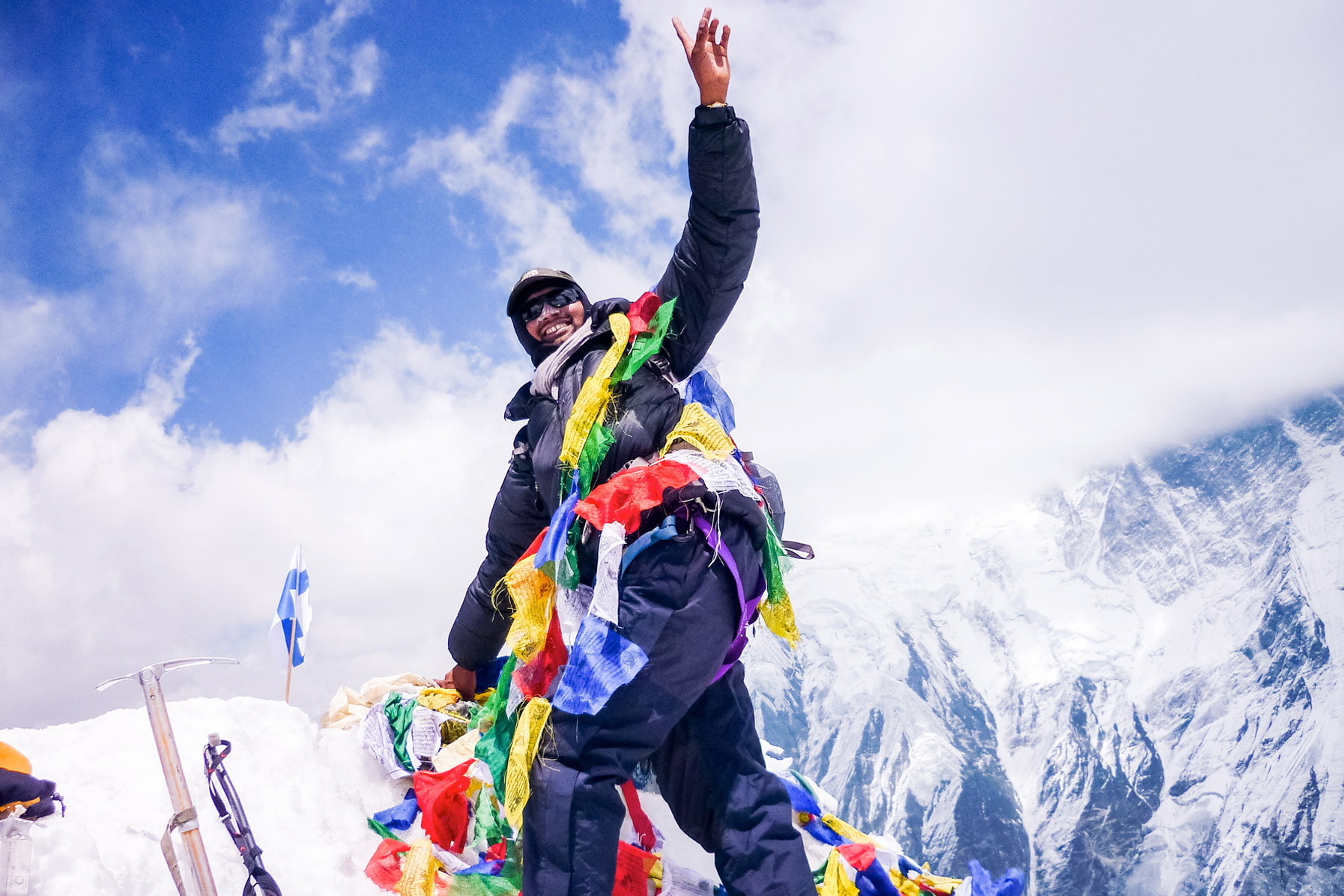
 Group Size: 1-15 PAX
Group Size: 1-15 PAX  Duration: 16 Days
Duration: 16 Days  Trip Grading: Challenging
Trip Grading: Challenging 